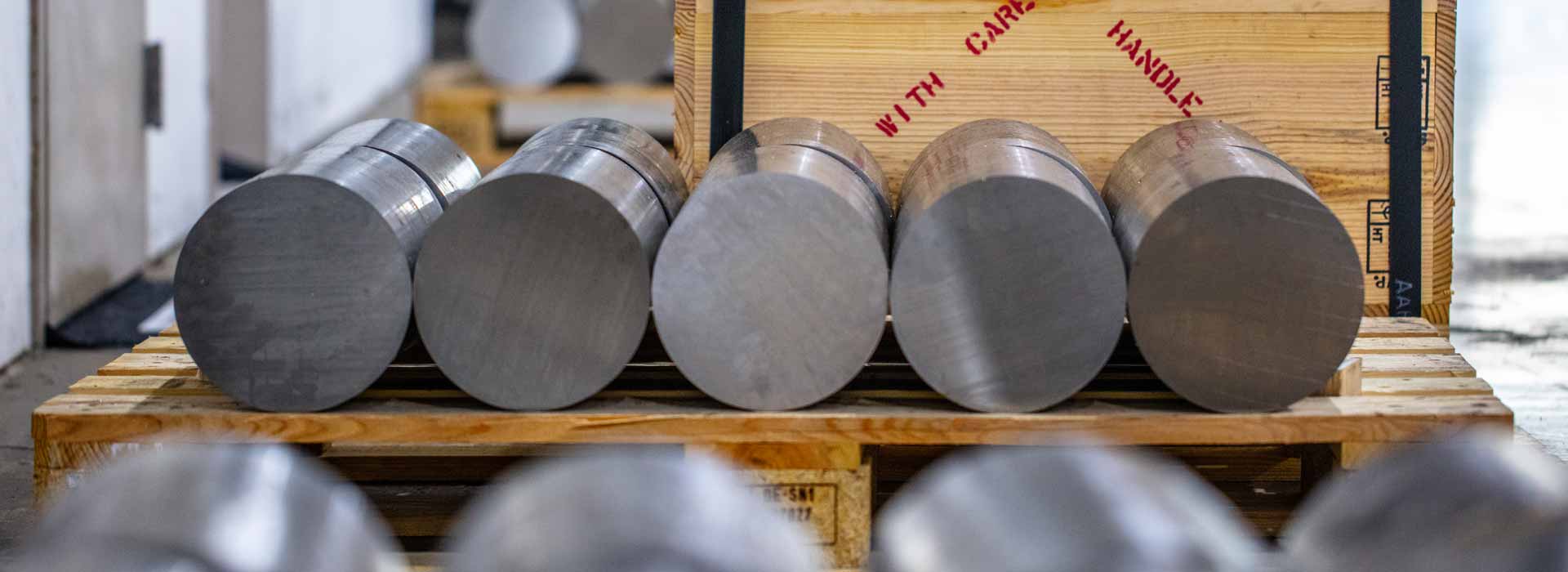(A) No.2 Temper. In low carbon cold-rolled strip steel, produced by cold rolling to a hardness next to but somewhat softer than full hard temper (B) In brass Stainless Steel Strip, Tempers are based on minimum tensile or yield strength. For Chromium-Nickel grades Half-Hard Temper 150,000 TS., 110,000 Y.S. Min.
Drawing metal wire through a die to reduce cross section and increase tensile strength.
Wire or tubing drawn to high tensile strength by a high degree of cold work.
A medium high carbon cold drawn spring steel wire, Used principally for cold wound springs.
(A) For Steel see Full Hard Temper (B) In brass mill terminology. Hard Temper is four B & S numbers hard or 37.1% reduction.
The ability of a metal, usually steel, to harden in depth as distinguished from the terms "hardness." (See.)
A medium or high carbon quality steel strip which has been subjected to the sequence of heating, quenching and tempering.
Any process which increases the hardness of a metal, Usually heating and quenching certain iron base alloys from a temperature either within or above the critical temperature range.
Degree to which a metal will resist cutting, abrasion, penetration, bending and stretching, The indicated hardness of metals will differ somewhat with the specific apparatus measuring hardness, See Brinell Hardness, Rockwell Hardness, Vickers Hardness, Scleroscope Hardness. Tensile Strength also is an indication of hardness. ?
The product of a single melting operation in a furnace, starting with the charging of raw materials and ending with the tapping of molten metal and consequently identical in its characteristics.
Altering the properties of a metal by subjecting it to a sequence of temperature changes, time of retention at specific temperature and rate of cooling therefrom being as important as the temperature itself. Heat treatment usually markedly affects strength, hardness, ductility, malleability, and similar properties of both metals and their alloys.
65% A copper-zinc alloy containing 35% zinc. Possesses high tensile strength. Used for springs, screws, rivets, etc.
Stress is proportional to strain in the elastic range. The value of the stress at which a material ceases to obey Hooke?s law is known as the elastic limit.
In steel mill practice, a process whereby ferrous alloy base metals are dipped into molten metal, usually zinc, tin, or tame, for the purpose of fixing a rust resistant coating.
Plastic deformation of metal at a temperature sufficiently high not to create strain hardening. The lower limit of temperature for this process is the recrystallization temperature.
(1) Brittleness of metal, resulting from the occlusion of hydrogen (usually as a by-product of pickling or by co-deposition in electroplating). (2) A condition of low ductility resulting from hydrogen absorption and internal pressure developed subsequently. Electrolytic copper exhibits similar results when exposed to reducing atmosphere at elevated temperature.
A steel having more than the eutectoid percentage of carbon. (See Eutectoid Steel)
Steel with less than eutectoid percentage of carbon, (See Eutectoid Steel)
